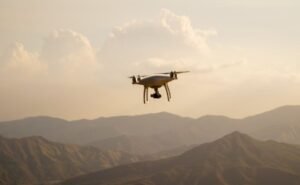Production for Use
In an economy where profit-driven production dominates, the concept of “Production for Use” offers an alternative approach. Production for use, also known as use-value production, focuses on producing goods and services for the direct satisfaction of people’s needs, rather than for exchange or profit. It emphasizes the importance of meeting individuals’ needs and improving overall well-being. Let’s delve deeper into this concept.
Key Takeaways:
- Production for Use prioritizes meeting individuals’ needs.
- It aims to improve overall well-being.
- It focuses on producing goods and services for direct use, rather than for exchange or profit.
Understanding Production for Use
Production for use revolves around the idea that the purpose of production should be the direct satisfaction of human needs and wants, rather than accumulating wealth or generating profits. It shifts the focus from market-driven dynamics to meeting the fundamental needs of individuals and communities. *By disregarding profit motives, production for use seeks to create a society that places people, not corporations or capital, at the center of economic activity.*
Proponents of production for use argue that it provides a more equitable and sustainable approach to economic development. Rather than driving overconsumption and creating artificial demand, it encourages the production of goods and services that directly fulfill societal needs and contribute to overall well-being. By acknowledging the social nature of production, production for use aims to build solidarity and cooperation among individuals, ultimately leading to a more harmonious society.
Advantages of Production for Use
Production for use offers several advantages over profit-driven production systems:
- Efficiency: By focusing on meeting concrete needs, production for use can allocate resources more efficiently, eliminating wasteful production and unnecessary consumption.
- Social Well-being: Prioritizing meeting individuals’ needs enhances overall social well-being, reducing inequality and ensuring a more equitable distribution of resources.
- Environmental Sustainability: By producing goods and services based on actual demand and need, production for use reduces overproduction and minimizes material waste.
Examples of Production for Use
Production for use can be observed in various settings and initiatives. Let’s take a look at a few examples:
Table 1: Production for Use Examples
| Example | Description |
|---|---|
| Community Gardens | Community-managed gardens that produce fresh, organic food for local residents. |
| Open Source Software | Software developed collaboratively and made freely available to the public, focusing on utility rather than monetary gains. |
| Cooperative Housing | Housing initiatives owned and managed collectively by residents, prioritizing affordable living spaces over profit. |
These examples demonstrate how production for use can be implemented at the grassroots level and within communities, allowing people to actively participate in the decision-making processes and directly benefit from the goods and services produced.
Challenges Faced by Production for Use
Implementing a production for use model is not without its challenges:
- Lack of Resources: Limited access to capital and resources can hinder the scale and viability of production for use initiatives.
- Cultural Shift: Transitioning from profit-driven production to production for use requires a significant shift in mindset and cultural perceptions surrounding value.
- Market Pressures: Production for use models might face competition from profit-oriented enterprises that benefit from economies of scale and marketing power.
Conclusion
The concept of production for use offers an alternative perspective on economic activity, prioritizing meeting individuals’ needs and improving overall well-being. By shifting the focus from profit-driven motives to the direct satisfaction of human needs, production for use aims to create a more equitable and sustainable society. Embracing this approach can pave the way for a more inclusive economy that benefits all members of society.

Common Misconceptions
Production for Use
Production for use is a concept that is often misunderstood or confused with other economic systems. Here are three common misconceptions surrounding this topic:
- Production for use means everything is free: One misconception about production for use is that it implies everything is free. While the goal of this economic system is to produce goods and services for the satisfaction of people’s needs, it doesn’t necessarily mean that everything is provided without any cost or effort involved.
- Production for use is inefficient: Another misconception is that production for use is inefficient compared to other economic systems. However, this is not necessarily the case. In a production for use system, resources are allocated based on needs, which can actually reduce waste and overproduction.
- Production for use leads to scarcity: Some people believe that production for use results in scarcity of goods and services since there is no monetary incentive for individuals to produce. However, in reality, production for use aims to meet the needs of people directly, which can help eliminate scarcity in sectors such as healthcare, education, and basic necessities.
It is important to dispel these misconceptions to have a more accurate understanding of production for use.

Introduction
Production for use refers to an economic model in which goods and services are produced primarily to meet people’s needs rather than for profit. This approach focuses on eliminating waste and ensuring that resources are allocated efficiently to benefit society as a whole. In this article, we present ten tables that provide interesting data and information about production for use, highlighting its benefits and impact on various aspects of society.
Table: Comparison of Waste in Production for Use and Profit-Oriented Production
This table compares the amount of waste generated in production for use and profit-oriented production. It showcases how the production for use model significantly reduces waste, leading to a more sustainable and environmentally friendly approach to consumption and production.
| Production Method | Waste Generated |
|---|---|
| Production for Use | Minimal waste, as resources are efficiently allocated. |
| Profit-Oriented Production | Significant waste due to overproduction, planned obsolescence, and unsold goods. |
Table: Impact of Production for Use on Income Equality
This table illustrates the impact of production for use on income equality. It demonstrates how this approach can address the wealth gap and create a more equitable society by ensuring that goods and resources are distributed based on need rather than personal wealth.
| Production Model | Income Equality Level |
|---|---|
| Production for Use | High, as resources are allocated based on need, reducing income disparities. |
| Profit-Oriented Production | Low, as wealth accumulation drives income inequality. |
Table: Environmental Impact of Production for Use vs. Profit-Oriented Production
This table compares the environmental impact of production for use and profit-oriented production. It highlights the positive contributions of the production for use model towards environmental conservation and sustainability.
| Production Method | Environmental Impact |
|---|---|
| Production for Use | Minimal environmental impact due to reduced waste, resource conservation, and sustainable practices. |
| Profit-Oriented Production | Significant environmental impact from pollution, resource depletion, and waste generation. |
Table: Efficiency Comparison of Production for Use and Profit-Oriented Production
This table highlights the efficiency comparison between production for use and profit-oriented production models. It demonstrates how production for use can optimize resource allocation and improve overall productivity.
| Production Method | Efficiency |
|---|---|
| Production for Use | High efficiency due to targeted production, reduced waste, and optimized resource utilization. |
| Profit-Oriented Production | Lower efficiency due to overproduction, inefficiencies caused by profit-driven decision-making. |
Table: Impact of Production for Use on Consumer Satisfaction
This table showcases the impact of production for use on consumer satisfaction. It demonstrates how the focus on meeting people’s needs rather than profit maximization can result in higher customer satisfaction levels.
| Production Model | Customer Satisfaction |
|---|---|
| Production for Use | High, as goods and services are designed to meet specific needs and requirements of consumers. |
| Profit-Oriented Production | Varies, as profit-driven decision-making may prioritize cost-cutting over delivering superior products/services. |
Table: Resource Allocation in Production for Use vs. Profit-Oriented Production
This table compares resource allocation in production for use and profit-oriented production models. It highlights the more efficient and equitable allocation of resources in the production for use approach.
| Production Method | Resource Allocation |
|---|---|
| Production for Use | Based on needs assessment and equitable distribution, ensuring resources are utilized efficiently. |
| Profit-Oriented Production | Primarily based on profitability and market demand, leading to potential resource misallocation. |
Table: Quality of Goods in Production for Use vs. Profit-Oriented Production
This table showcases the difference in the quality of goods produced under the production for use and profit-oriented production models. It emphasizes how production for use prioritizes quality to meet consumers’ needs.
| Production Method | Quality of Goods |
|---|---|
| Production for Use | High quality, as goods are designed and produced to meet specific needs, ensuring durability and functionality. |
| Profit-Oriented Production | Varies, as profit maximization may lead to compromises in quality to reduce production costs. |
Table: Benefits for Small-Scale Producers in Production for Use
This table outlines the benefits for small-scale producers under the production for use model. It demonstrates how this approach supports local economies and encourages sustainable small-scale production.
| Production Model | Benefits for Small-Scale Producers |
|---|---|
| Production for Use | Increased market access, reduced competition from larger corporations, improved stability, and sustainable practices. |
| Profit-Oriented Production | Limited access to markets dominated by large corporations, higher competition, and potential resource exploitation. |
Conclusion
Production for use represents a paradigm shift in economics, focusing on meeting people’s needs rather than pursuing profit. The tables presented in this article highlight the various benefits of this approach, including reduced waste, income equality, environmental conservation, efficiency, consumer satisfaction, equitable resource allocation, quality goods, and support for small-scale producers. By adopting the production for use model, societies can reshape their economies to prioritize sustainability, social welfare, and meet the diverse needs of their populations.
Frequently Asked Questions
Production for Use
What is production for use?
Production for use refers to the concept of producing goods or providing services solely for the purpose of self-consumption rather than for sale or exchange in the market.
Why is production for use important?
Production for use promotes self-reliance, reduces dependency on the market, and allows individuals or communities to meet their own needs without relying solely on purchasing goods or services from others.
How does production for use differ from production for sale?
Production for use focuses on meeting personal or community needs, whereas production for sale aims to generate income through selling goods or services to others.
Can production for use be applied in different industries?
Yes, production for use can be applied in various industries such as agriculture, manufacturing, and even services, where the primary goal is to fulfill specific needs internally rather than for commercial purposes.
What are the advantages of production for use?
Some advantages of production for use include cost savings, increased self-sufficiency, reduced environmental impact, and the ability to tailor products or services to meet specific requirements.
Are there any challenges associated with production for use?
Yes, some challenges include limited resources, lack of specialized knowledge, potential inefficiencies in production, and the need for proper planning and coordination.
Is production for use a common practice in society?
Production for use is not as widespread as production for sale, but it is practiced in certain communities or by individuals who prioritize self-sustainability and reducing their dependence on external markets.
Can production for use contribute to sustainable development?
Yes, production for use aligns with the principles of sustainable development by promoting local self-reliance, minimizing waste and carbon footprint, and fostering resilient and interconnected communities.
Are there any examples of production for use initiatives?
Examples of production for use initiatives can range from community gardens and micro-factories producing goods for local consumption to cooperative housing projects where residents collectively manage resources and provide services to each other.
How can I start implementing production for use in my life or community?
To begin implementing production for use, you can start by identifying the needs within your community, exploring skills and resources available, promoting collaboration, and fostering a culture of self-sufficiency.




